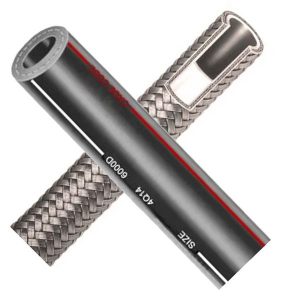
Hose tubing plays a critical role in many machines and systems. Consisting of a flexible and hollow conduit, it’s used to carry substances. Some types of hose tubing carry oil or fuel, whereas others carry air or gas. If you’re planning to use hose tubing, however, you’ll need to choose the right type.
Pressure Rating
You should consider the pressure rating when choosing hose tubing. Most types of hose tubing are designed to operate under pressure, but the specific amount of pressure they can handle varies.
Low-pressure hose tubing is designed to handle low amounts of pressure, such as 50 to 150 pounds per square inch (PSI). Medium-pressure hose tubing is designed to handle medium amounts of pressure, such as 200 to 500 PSI. High-pressure hose tubing, on the other hand, is designed to handle high amounts of pressure, such as 600 to 1,000 PSI.
Temperature Rating
In addition to the pressure rating, you should consider the temperature rating when choosing hose tubing. Hose tubing can degrade when exposed to extreme temperatures. Extreme heat may cause it to deform or even melt, whereas extreme cold may cause it to crack or become brittle.
Temperature ratings typically vary by material. Silicone, for instance, is known for its heat-resistant properties. It can withstand temperatures of up to 400 degrees Fahrenheit, whereas polyvinyl chloride (PVC) will begin to break down at much lower temperatures.
Flexibility
How flexible is the hose tubing? While all hose tubing is flexible, some types are more flexible than others. You can bend them more easily — and bending won’t permanently deform or damage them.
Rubber and silicone hose tubing are both flexible. They are typically more flexible, in fact, than PVC and polyurethane. The downside to rubber and silicone hose tubing, though, is that they aren’t as durable as their PVC and polyurethane counterparts.
Chemical Compatibility
Unless you’re planning to use it to transport water, you should consider chemical compatibility when choosing hose tubing. Chemical compatibility refers to how stable a material is when exposed to chemicals. Hose tubing is available in different materials, such as rubber, silicone, PVC and polyurethane. When exposed to various chemicals, some of these materials may degrade.
Silicone is known for its excellent chemical resistance. It can withstand many corrosive chemicals that would otherwise damage other materials. Hose tubing that resists chemicals helps to prevent accidents like leaks or spills, which can be hazardous.



